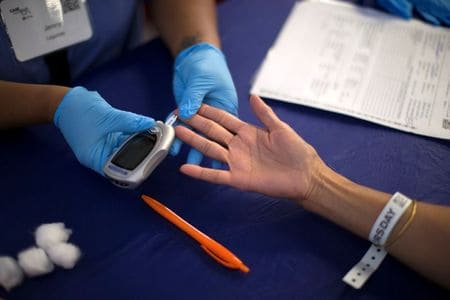The continuity of diabetes care, described as the extent to which patients are cared for by the same physician, is an important component of diabetes management, explains Eric Yuk Fai Wan, BSc, MSc, PhD.
“Higher continuity of care is related to improved patient trust and treatment compliance and may even reduce the risk for cardiovascular disease (CVD) in patients with diabetes,” Dr. Wan says. “However, in many public-sector healthcare settings, due to workforce constraints, temporary absence or retirement of physicians, and frequent rotation of physicians-in-training, maintaining a long-term, one-to-one, patient–physician relationship may not be feasible. In larger healthcare settings, delivering care within a team-based framework permits greater flexibility in workforce mobilization and allows for a greater chance for patients to receive care from the same team of physicians, even when their personal physician is not available.”
Frequency & Continuity of Physician Visits Proved Beneficial
For a paper published in Diabetes Care, Dr. Wan and colleagues conducted a retrospective cohort study to examine the association between team-based continuity of care and the incidence of CVD in patients with diabetes. The researchers retrospectively followed 312,068 patients with T2D and with no history of CVD for about 7 years. “Based on their EHRs, we looked at the relationship between team-based continuity of care and risk for CVD and all-cause mortality,” Dr. Wan adds. “Due to the heterogeneity in a huge cohort of patients with diabetes, we also conducted several subgroup analyses, such as sex, age, and different diabetic control indicators like A1C to obtain a robust conclusion.”
Patients with diabetes who visited the same team of physicians more frequently, compared with those who did not, had lower risks for CVD and all-cause mortality. “This relationship was even more apparent in younger patients,” Dr. Wan notes. “If patients visited the same team nine out of every 10 attendances, their risks for CVD and all-cause mortality were 13% and 6% lower, respectively, compared with those who visited the same team five or lower out of every 10 attendances. We observed a particular reduction in the risk for coronary heart disease, stroke, and peripheral vascular disease (Table).”
Team-Based Continuity of Care May Be Expanded to Other Chronic Diseases
Previous studies, according to Dr. Wan, have shown that managing patients using physicians working as a team could improve interpersonal relationships between patients and physicians, which in turn improves patient satisfaction, develops patients’ trust in physicians, and facilitates treatment compliance. “Given that maintaining a one-to-one patient–physician relationship is challenging in public primary care clinics with many physicians, providing continuity of care in the form of a physician team may serve as a more flexible option for achieving better health outcomes for patients with diabetes,” he notes.
Dr. Wan and colleagues assert that team-based continuity of care may also be beneficial for other chronic diseases and conditions that need continuous and long-term medical care, such as hypertension. “Further research should be conducted in this area,” Dr. Wan adds. “Unfortunately, our research does not imply any causal relationship between continuity of care and the risk for CVD risks. These results should be confirmed, ideally through future randomized controlled trials, to verify the beneficial effects of team-based continuity of care in patients with diabetes.”



 Martta Kelly
Martta Kelly